and Paolo Biondi2
(1)
Aesthetic and Maxillofacial Surgery, Padova, Italy
(2)
Maxillofacial Surgery, Forlì, Italy
Abstract
In 2005, the senior author (FM) conceived and produced a new pliable case sheet for aesthetic facial surgery patients named Aesthetic Facial Surgery: First Consultation Notes, Essential Medical History & Clinical Diary (AFS Folder) (Fig. 13.1a, b). One thousand copies of the AFS Case Sheet were printed, and these were utilized for every new patient who was seeking aesthetic facial surgical procedures.
In 2005, the senior author (FM) conceived and produced a new pliable case sheet for aesthetic facial surgery patients named Aesthetic Facial Surgery: First Consultation Notes, Essential Medical History & Clinical Diary (AFS Folder) (Fig. 13.1a, b). One thousand copies of the AFS Case Sheet were printed, and these were utilized for every new patient who was seeking aesthetic facial surgical procedures.
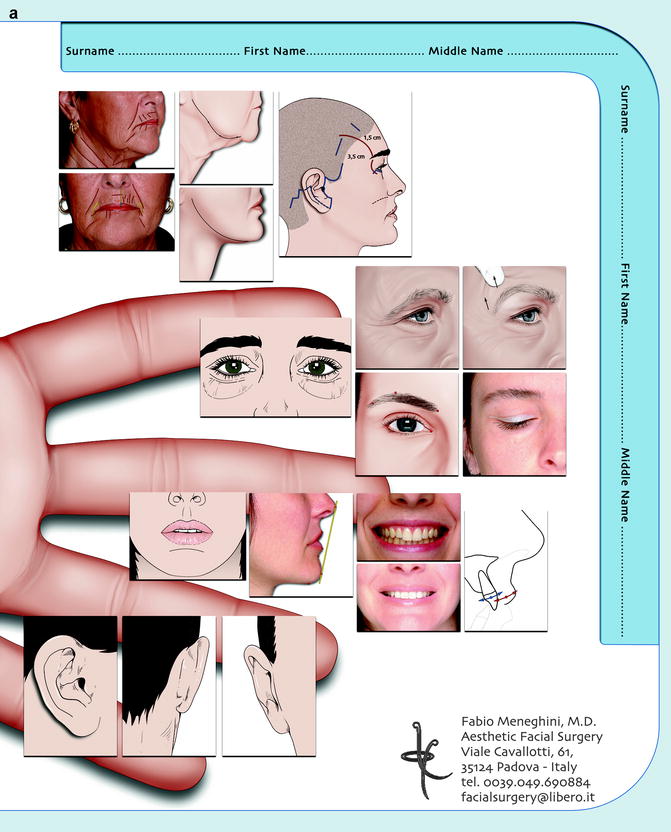
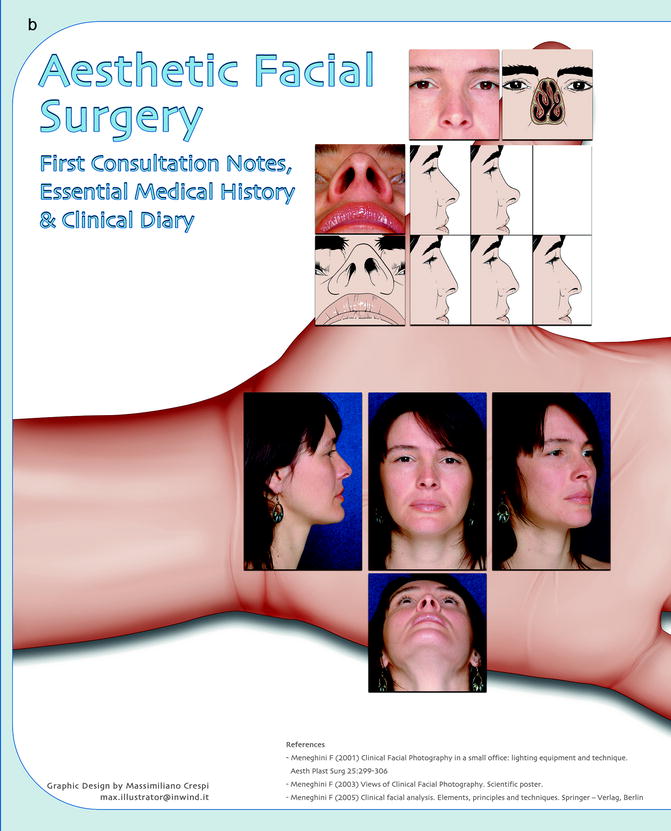
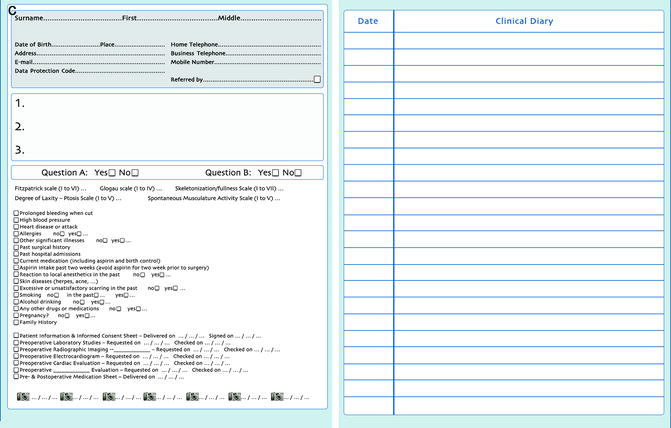



Fig. 13.1
Aesthetic facial surgery: first consultation notes, essential medical history, and clinical diary (a) Front cover, (b) Back cover, (c) Internal pages
The objectives of this simple, cheap instrument are numerous and as follows:
-
To help surgeons establish the best line of communication
-
To facilitate cooperation between patient and physician
-
To organize a “basic” standard patient interview
-
To record, in the most straightforward way, the patient’s initial requests
-
To help surgeons select patients and decide if a person is an ideal candidate for aesthetic facial surgery
-
To help the surgeon to plan surgery and communicate objectives and drawbacks
-
To help surgeons to describe the exact position and length of every planned facial surgical scar
-
To gather preoperative medical reports, x-rays, clinical facial photographs, etc., into the two envelopes
-
To document stages of consent with precise notes and drawings which have been developed by the patient and physicians as a team
A printable full-size electronic copy of AFS folder is available in Sect. 5 on Springer Extra Materials (extras.springer.com).
13.1 General Characteristics of AFS Folder
The case AFS Folder is made of strong, matt cardboard to enable drawing and writing with a pen or pencil on both sides with ease. The cardboard is folded and stuck together to obtain two internal large envelopes which are very handy for gathering the patient’s clinical reports, such as photographs, CD-ROMs, DVDs, x-rays, preoperative blood tests, and other materials (Fig. 13.2).
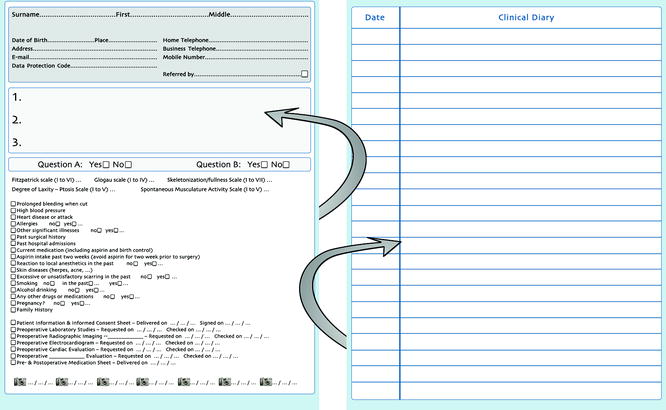

Fig. 13.2
The two large envelopes are obtained by folding and sticking the cardboard together
The front cover contains two distinct boxes in which the patient’s surname, first name, and middle name are recorded along the horizontal and vertical margins (Fig. 13.3) and which allows for storage of folders in the filing cabinet both horizontally and vertically.
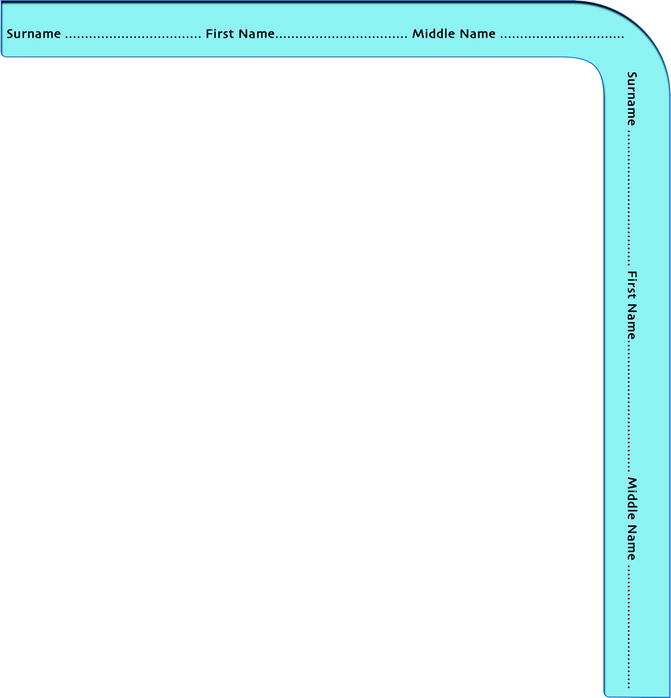

Fig. 13.3
The upper right-hand corner of the front cover with two boxes, one vertical and one horizontal, for writing the patient’s surname, first name, and middle name
13.2 Front and Back Covers
The main objective of the two covers of the AFS Case Sheet is that of offering, with a single large “map,” some helpful images that can be utilized to inform the patient about:
-
His facial deformities and/or aging process
-
The need for a specific surgical procedure
-
The placement of surgical incisions and resulting scars
-
Any other detailed or in-depth information or explanations utilizing images rather than verbal explanations
This “map” contains many images divided into small specific groups relating to the nasal, orbital, ear, chin-neck, and perioral area. Some frontal images and a drawing with facelift skin surgical incisions are also inserted.
13.2.1 Frontal, Oblique, Profile, and Basal Full Face View
These images are central in the cover “map” of the AFS Case Sheet (Fig. 13.4): they are very useful when discussing facial features, proportion, and symmetry with the patient. Planned surgery can be illustrated by drawing the skin incision line and the area in which the effects of the surgery are expected to be directly onto the images. For example, when introducing the procedure of subchin liposuction, the profile view helps me to point out where fat will be reduced, while the frontal view gives me the opportunity to illustrate the position and extension of the incision line with precision (Fig. 13.5).
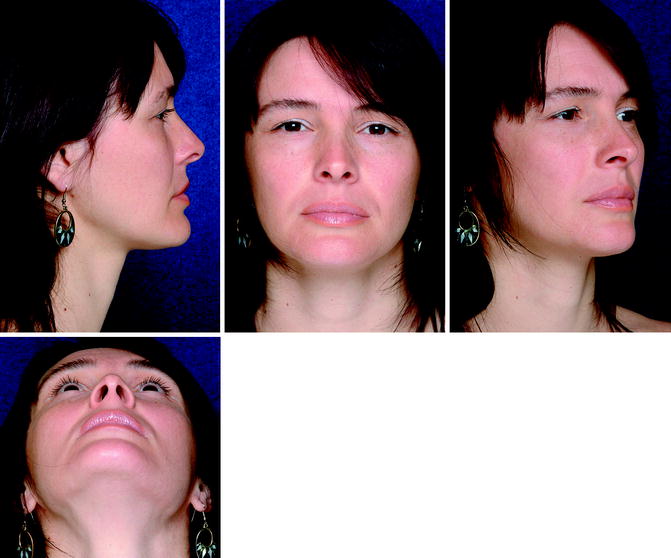
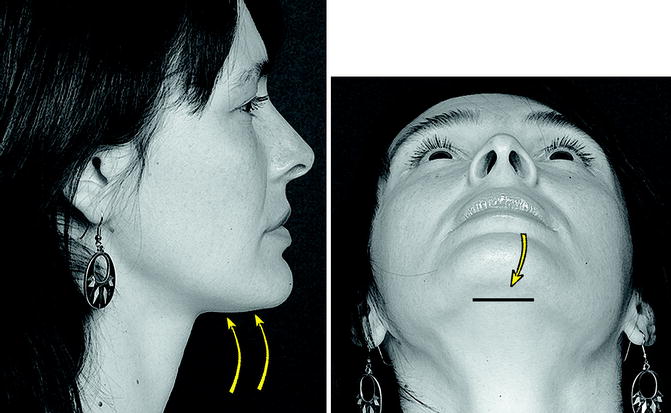

Fig. 13.4
Frontal, oblique, profile, and basal full face views

Fig. 13.5
In the case of subchin liposuction, the arrows drawn over the profile view indicate the anatomical area treated with the procedure, while the black line drawn on the basal view illustrates the skin incision line and resulting surgical scar
Stay updated, free dental videos. Join our Telegram channel

VIDEdental - Online dental courses


